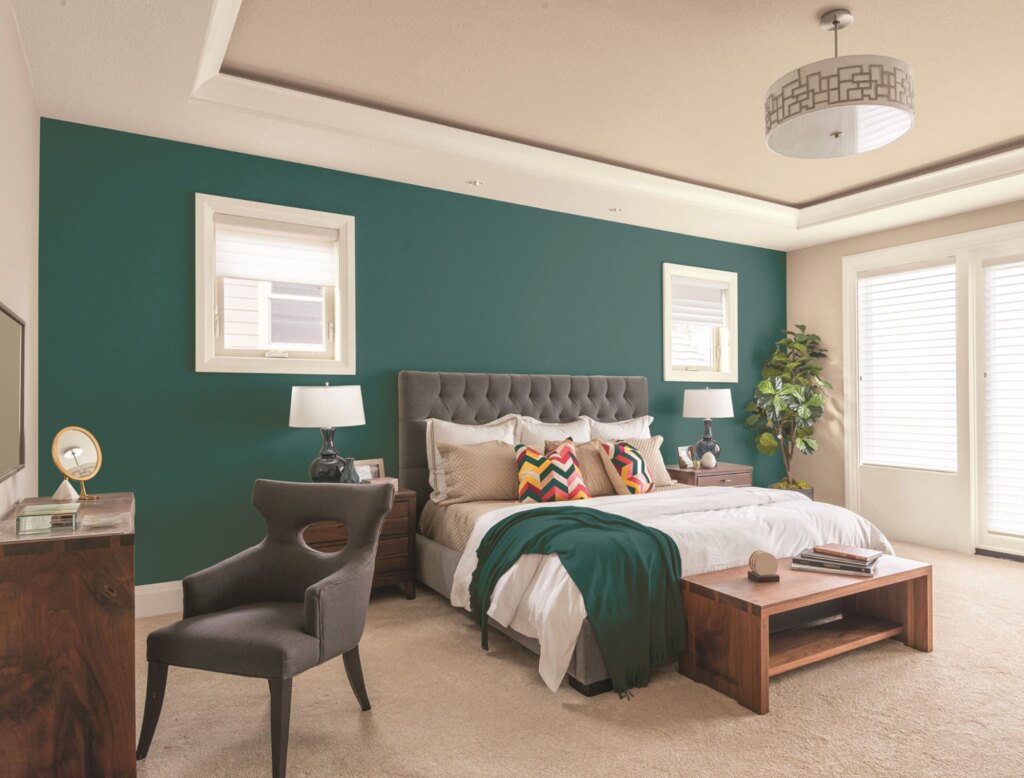In this blog, I will talk about “Are accent walls outdated?” and Should you add it to your home?
When I started renovating my bedroom, I was also caught in a design dilemma. I wanted to make a bold statement with an accent wall, but I was not sure whether Accent walls are in trend or outdated.
Then I realized this wasn’t just about trends. It was about creating a space that felt fresh and uniquely mine.
However, The opinions were split—some said accent walls were a relic of the past, while others argued they’re timeless when done right.
So, Let’s dive into the world of accent walls together and discover today’s trends, tips, and timeless techniques to make accent walls the right choice for you.
TODAY’S TRENDS IN ACCENT WALLS
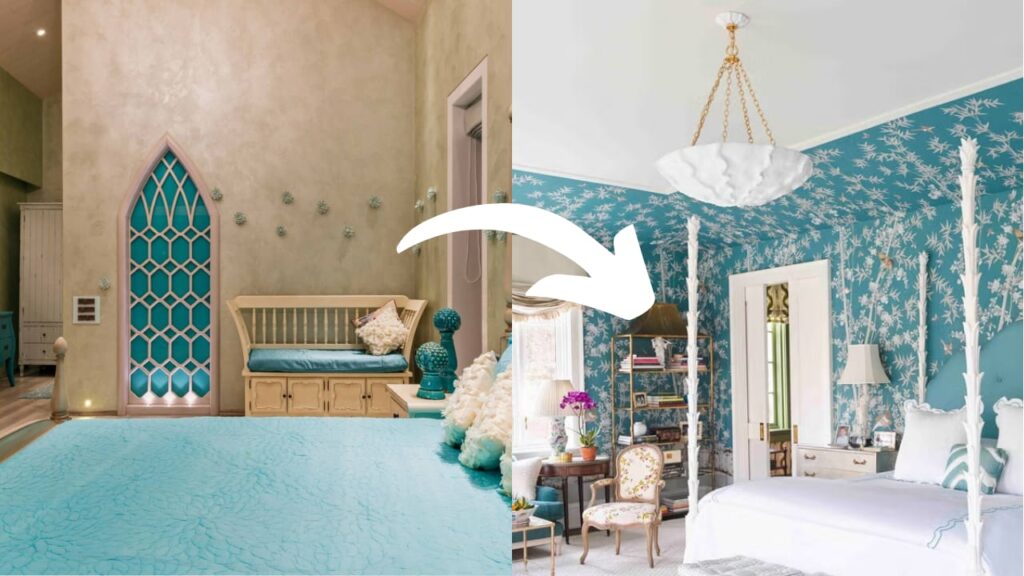
Are accent walls outdated? The short answer is no—but they’ve certainly evolved to fit modern design trends.
In the past, accent walls often featured bold, contrasting colours that stood out dramatically. While paint may have dominated the accent wall scene in the past, natural materials are now taking center stage.
Textured materials like wood panels, stone, or wallpaper with soft patterns are now preferred, creating a timeless and sophisticated look.
Additionally, Colour choices have also shifted to neutral tones, earthy hues, and muted palettes. This modern take ensures that accent walls feel intentional rather than overpowering.
Also, I learned that pairing bold colours with neutral furniture and light accents balance the boldness and keeps the room well-knit.
Placement has also changed. Instead of being a random wall painted differently, accent walls are now strategically chosen to highlight architectural features, like the wall behind a bed, a fireplace, or a statement piece of furniture.
Moreover, If you’re feeling adventurous, you could even DIY an accent wall. This is the trendiest and is such a unique way to bring personality into a space.
So, while the traditional idea of accent walls may feel outdated, their contemporary reinvention proves they still hold a valuable place in interior design—when done right.
Pros and Cons of accent walls
Now, If you’re on the fence about whether to incorporate an accent wall into your home, let’s dive into the pros and cons from a more personal perspective.
PROS:-
- Instant Visual Interest: One of the main reasons people still love accent walls is their ability to create a focal point.
- A Simple Yet Bold Statement: Accent walls allow you to infuse bold colours or patterns without overwhelming the entire room.
- Adds Depth and Dimension: Accent walls can create a sense of depth, making a room feel larger or more dynamic.
- Flexibility with Trends: If you’re someone who loves keeping up with trends, accent walls offer a relatively low-risk way to do so.
- Distraction Tactics: You can turn an awkward spot into attention one by just through an accent wall.
CONS:-
- Potential to Feel Outdated: Despite their popularity in the past, accent walls have been flagged by some interior designers as being a trend that’s losing its charm.
- Can Break Up the Flow: While an accent wall is meant to create a focal point, in some cases, it can disrupt the natural flow of your room.
- Risk of Overdoing It: If you go overboard with too many accent walls, your space might start feeling like a patchwork quilt rather than a harmonious whole.
- Difficult to Match with Existing Decor: Another issue I’ve encountered with accent walls is the challenge of matching them with other decor elements.
- Maintenance Challenges: Accent walls, especially those with bold or dark colours, can sometimes show wear and tear more easily than the rest of the walls.
Different Types of Accent Walls
With so many options available, let’s explore the different types of accent walls to help you choose the perfect one for your home.
1. Solid Color Accent Walls
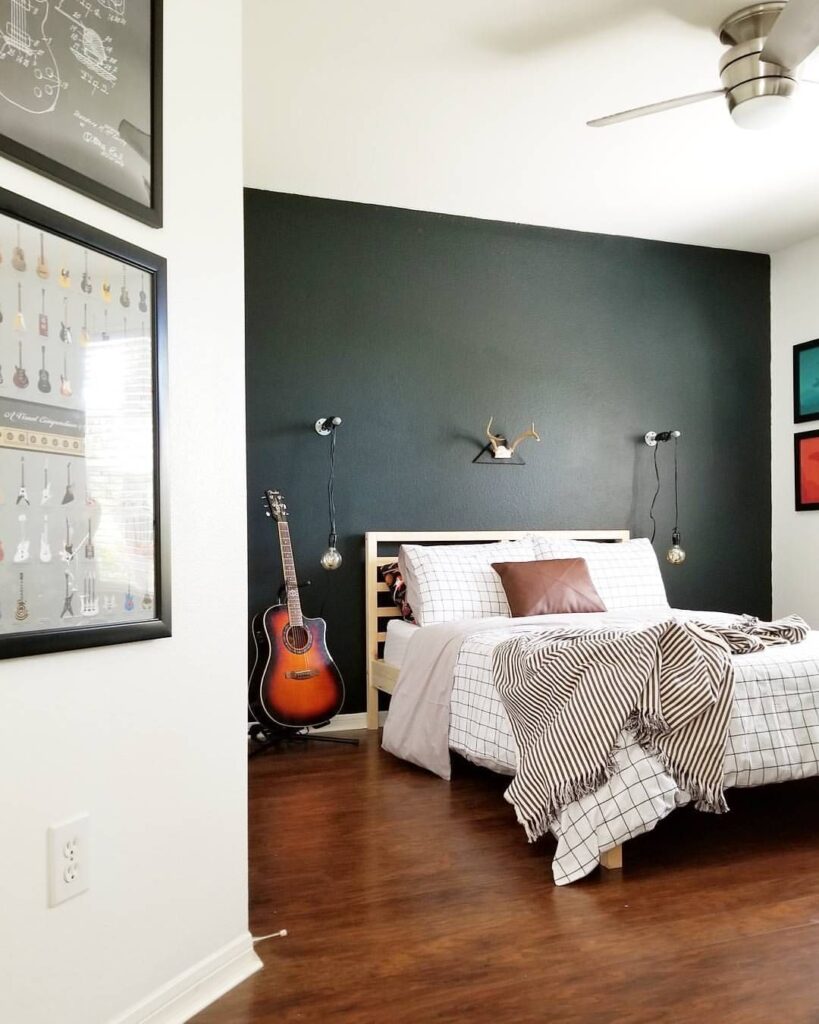
The beauty of a solid colour is that it’s simple but still powerful. If you’re unsure about committing to a colour all over the room, this is an easy way to experiment.
Make sure the colour complements the rest of the room’s decor so it doesn’t feel out of place. If you’ve got a neutral room with light beige walls, a deep red accent wall can pop and bring a sense of warmth.
2. Textured Accent Walls
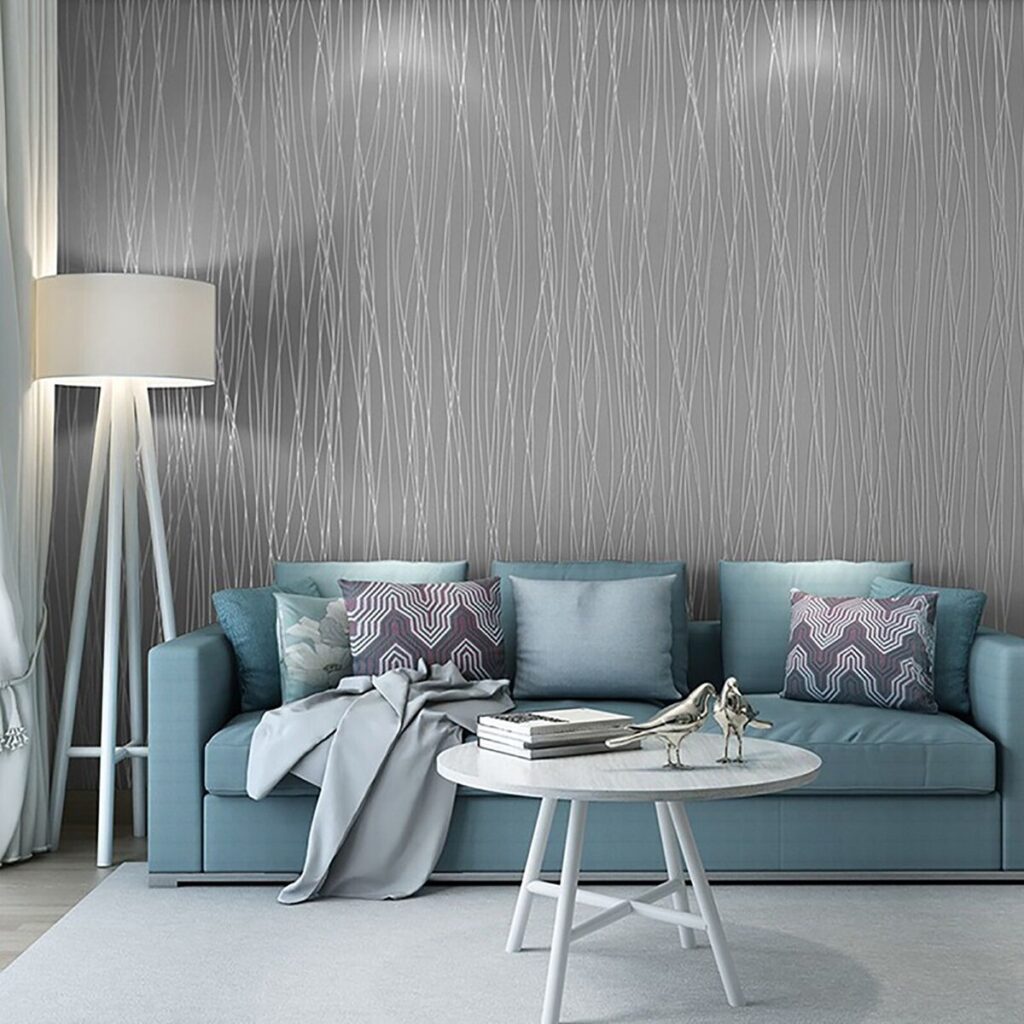
Adding texture can elevate your accent wall game. There are so many options—shiplap, stone, brick, or even wallpaper with raised designs. A textured wall can add a lot of character and personality to a space, making it feel cosy or even luxurious, depending on what you go for.
If you want a more contemporary feel, sleek panels or minimalistic textured wallpaper might be the way to go.
3. Accent Walls with Gallery Art
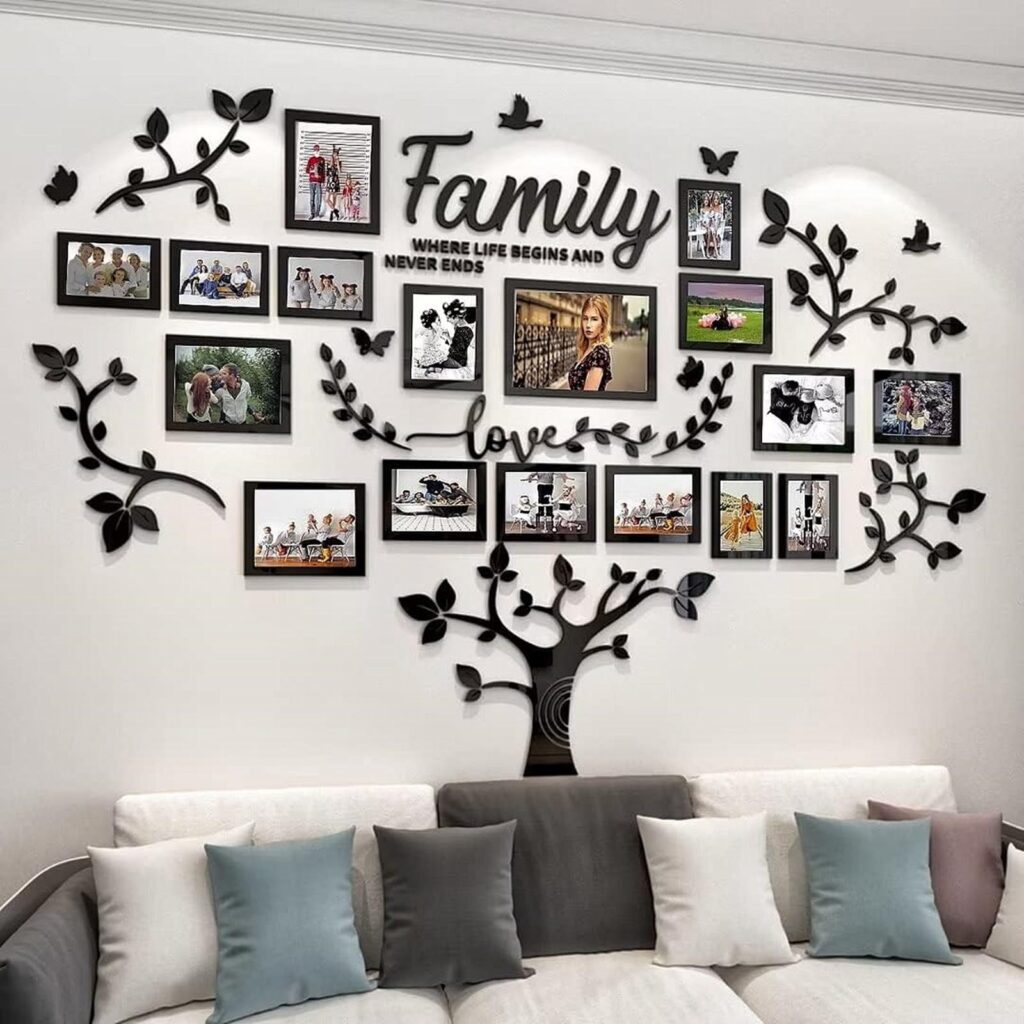
If you’re not into adding too much colour or texture, another fun way to create an accent wall is by hanging large pieces of art or decorative panels.
Make sure the art or decor you choose ties into the overall vibe of the room. Too many mismatched pieces can create visual clutter, while well-curated decor will keep everything looking cohesive.
4. Mirror or Glass Accent Walls
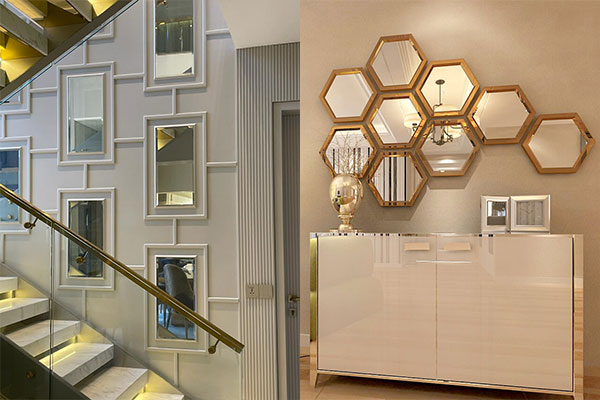
If you want to add a touch of elegance and make a room feel more spacious, mirror or glass accent walls are a stunning choice.
Be cautious of the placement—mirrors work well in entryways, bathrooms, or even behind a couch in a living room. Avoid placing mirrors across from one another, as this can create an overwhelming visual effect.
5. Wallpaper Accent Wall
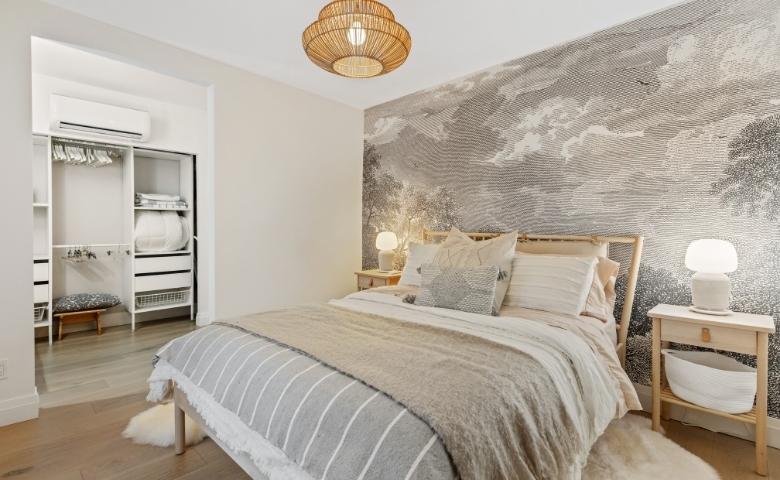
One of the best things about wallpaper is the sheer variety of designs available. Whether you love bold florals, intricate geometric patterns, abstract art, or even textured effects like faux brick or wood, there’s something for every style and mood.
When I was working on my accent wall, I was amazed at how many options there were to match my existing decor.
6. Wood Accent Wall
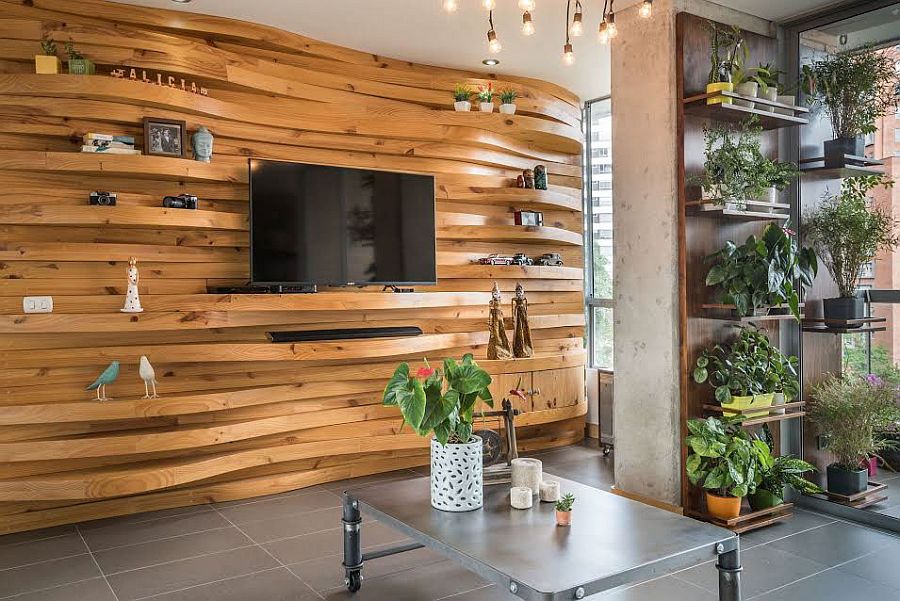
For a cosy, rustic vibe, a wooden accent wall is perfect. Reclaimed wood or painted shiplap can add warmth and charm to the room. Imagine it paired with a long farmhouse table and pendant lighting—it’s like dining in a chic countryside retreat!
As for the wood, I went with reclaimed wood planks for their rustic look. The variations in colour and texture added so much character, and it felt good to use sustainable materials.
Where Can You Add Accent Walls in Your Home?
I’ve tried a few Accent walls in different rooms, and each one brought something unique to my home. So, I am sharing where I’ve used them, and where I think they can work best for you too!
1. Living Room: The Heart of Your Home
I added one accent wall design behind my couch and painted it a deep teal colour, and it immediately gave the space a sense of depth.
If you have a focal point, like a fireplace or a media centre, an accent wall helps bring attention to it. It also sets the tone for the entire room’s vibe—whether you want it to be relaxing, vibrant, or dramatic.
2. Bedroom: Make It a Personal Retreat
If you’re all about modern minimalism, a sleek slatted wood wall or a bold painted geometric pattern might complement your bedroom perfectly.
If you lean more rustic, exposed brick or shiplap could tie everything together. It’s like picking an accessory that matches your favourite outfit—it should enhance, not clash.
3. Dining Room: For a Bold Statement
Dining rooms are a great place to play with patterned wallpaper. I’d suggest something timeless, like a floral, damask, or geometric design. If you want something modern, go for a metallic or textured wallpaper that catches the light and adds a touch of glamour.
Now, this one might surprise you, but I tried adding an accent wall to my dining room—right behind the dining table—and I love how it turned out.
4. Hallways or Entryways: A Sneaky Touch of Style
I used a mix of frame sizes and styles, which made it look dynamic without feeling chaotic.
Turn your hallway into a personal art exhibit! Curate a mix of family photos, artwork, or even vintage mirrors for a gallery wall. In an entryway, this works beautifully to showcase your personality while creating a warm, welcoming vibe.
Tips to Avoid Accent Wall Looks Feel Outdated
I am sharing the tips that have worked for me—these simple tweaks can elevate the look of your accent wall and keep it feeling fresh!
- Keep It Simple: I’ve found that one or two well-placed accent walls can make a huge statement, but any more, and the room starts to lose its cohesive vibe.
- Pick Colors that Endure: Instead of focusing on what’s trending, choose colours that suit the room and fit into the overall palette of your home.
- Neutral Is the New Bold: Neutral walls are more versatile and make it easier to switch up your decor without clashing with the wall colour.
- Focus on the Right Spot: I’ve learned that accent walls work best when placed behind focal points, like a bed, a fireplace, or an entryway. These spaces naturally attract attention.
- Embrace Empty Walls: I’ve found that blank walls with minimal windows or doors are the ideal canvases for experimenting with colour, texture, or design.
Conclusion
Whether accent walls are outdated or still iconic comes down to how you make them your own. I’ve learned that when you get creative with bold colours, unique textures, or a personal touch, accent walls can still bring so much character to a space.
It’s all about finding that balance where your wall feels fresh, but also timeless. For me, it’s about letting the accent wall highlight the personality of a room and making sure it complements the overall vibe.
So, if you love the idea of an accent wall, don’t be afraid to dive in and make it work for you—just keep it authentic, and it’ll never feel outdated.

